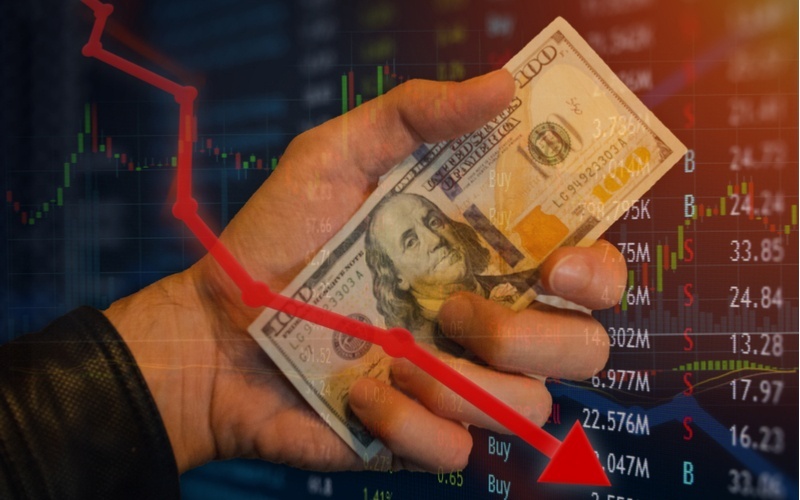
In fact, it wouldn’t surprise me if those articles weren’t algorithmically generated based on whatever AP news story is trending.
Just looking at today’s news makes the point:
Fox Business has declared that Twitter’s profits are up because Trump demanded fairer social media.
I’m quite certain that Donald Trump’s call for a fairer social media had very little to do with the bump in Twitter’s stock price. But saying “user numbers are up, and profits are up” doesn’t generate as much click bait as anything involving Donald Trump – from readers on both sides of the US political aisle. Anyone who regularly follows financial headlines knows of just how laughable a lot of the supposed claimed correlations are.
Analysts grasping at straws trying to explain market movements becomes particularly laughable when looking at the options markets. What is clear reading option market news pieces is that writers understand very little about options or the reasons option traders enter trades. For some reason, most of the media assumes all option trades are bets on prices moving over a period of time. If traders buy puts, financial writers think the stock price is going down. If traders buy calls, those same writers think the pricesare going up. It’s a very limited analysis.
In actuality, many option traders, Steady Option traders included, trade options to make money from volatility swings, to hedge existing positions, to help exit large stock positions, to help enter into long/short positions (a form of a hedged position), and a host of other reasons. It is impossible to look at a ticker and see “500 contracts of the 150 puts on stock ABC were bought” and conclude the reason for the purchase was because investors are betting on a price decline.
A recent article on TSLA indicates this exact point.
The author saw that “investors bought 5,000 weekly puts expiring April 26 with a strike price of $200…and 5,000 monthly contracts expiring in late June.” The author concluded this was a “type of crash protection” against coming earnings. This analysis is possibly correct, but more likely than not wholly incorrect. On this same day, there were also the same amount of the May monthly 200 put sold. In other words, it looks like that trader entered into:
- BTO April 26 200 Put
- STO May 17 200 Put
Which all Steady Option members should recognize as an earnings diagonal trade. Given that earnings for TSLA are approaching (April 24), to me, it seems like this is even more likely of a possible trade. Further, I would conclude this was an earnings diagonal trade because it looks like the position was closed today (due to option volumes on the same positions). Reporters don’t appear to consider this point.
Just as commonly, if there’s not a “matching” trade to see a diagonal or straddle setup, is the fact that most very large option positions are taken for hedging reasons or to assist in the liquidation of large positions. For example, if Joe Smith trader owned AAPL stock bought 5 years ago, Mr. Smith has well over one hundred percent gains. If Mr. Smith still has faith in AAPL, he may not want to sell (or incur capital gains taxes), but he also doesn’t want to keep that much risk on the table. So,he buys the June 2020 150 puts for $3.00. This means he’s locking in a 50% gain for well over a year for only 1.5% of the current price. This is not a “bet” that the stock price is going to decline. It’s locking in gains. If an institution owns 10m shares of AAPL, it probably has a duty to enter into a hedge such as this. There is no way to view a single options trade and make a prediction on “market sentiment.”
So why should we even read options news and reporting? Well I do it to see potential options trades. Higher volume trades typically mean more liquidity and tighter spreads (though not always), which means I can option trade for “cheaper.” High volume announcements also get me to look at just how that trade might have been structured, thereby giving an idea for other trades. Just because a reporter is ignorant as to the reason for a trade does not mean an options trader cannot pull out worthwhile information for their own uses – while laughing at the reporter’s lack of option knowledge and hopefully making money in the process.
Christopher Welsh is a licensed investment advisor and president of LorintineCapital, LP. He provides investment advice to clients all over the United States and around the world. Christopher has been in financial services since 2008 and is a CERTIFIED FINANCIAL PLANNER™. Working with a CFP® professional represents the highest standard of financial planning advice. Christopher has a J.D. from the SMU Dedman School of Law, a Bachelor of Science in Computer Science, and a Bachelor of Science in Economics. Christopher is a regular contributor to the Steady Options Anchor Strategy and Lorintine CapitalBlog.






There are no comments to display.
Create an account or sign in to comment
You need to be a member in order to leave a comment
Create an account
Sign up for a new account. It's easy and free!
Register a new account
Sign in
Already have an account? Sign in here.
Sign In Now